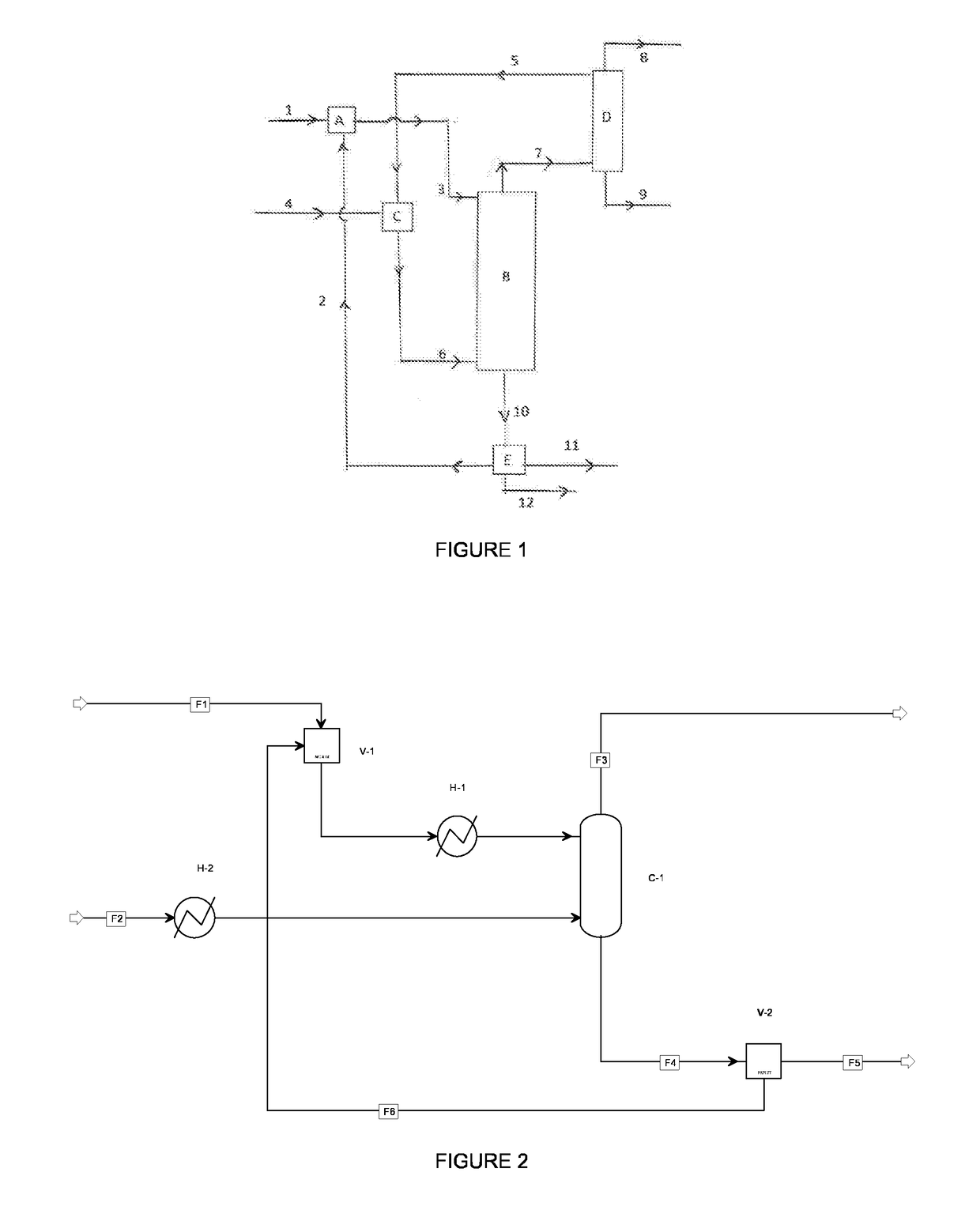Preparation of dialkyl esters of 2,5-furandicarboxylic acid
a technology of carboxylic acid and dialkyl esters, which is applied in the field of preparation of dialkyl esters of 2, 5furandicarboxylic acid, can solve the problems of not only water removal from vaporized esterification products, unfavorable purification by washing, and low boiling point of alkanols, so as to facilitate separation and reduce the effect of energy consumption and low boiling poin
- Summary
- Abstract
- Description
- Claims
- Application Information
AI Technical Summary
Benefits of technology
Problems solved by technology
Method used
Image
Examples
example
[0049]Reference is made to FIG. 2. A stream of a crude composition comprising a mixture of FDCA and the monomethyl ester thereof from an oxidation process (stream F1) is mixed in a feed tank (V-1) with a recycle stream F6 that is rich in the dimethyl ester of FDCA. The combined stream comprising solid FDCA is preheated by heat exchanger H-1 to 190° C., and then fed to the upper stage of a reactive stripping column C-1. This is a column operating at 5 bar with 15 plates, each of which has a residence time of 5 minutes.
[0050]A dry methanol stream F2 is heated and vaporized in a heater H-2 and fed below the lowest plate into the reactive stripping column C-1. As methanol goes up into the column, it partly dissolves in the liquid mixture where it reacts with FDCA and the monomethyl ester thereof to produce the dimethyl ester and water. The water formed vaporizes and leaves the column at the top together with non-reacted methanol and some entrained product (stream F3). As methanol is fed...
PUM
| Property | Measurement | Unit |
|---|---|---|
| pressure | aaaaa | aaaaa |
| temperature | aaaaa | aaaaa |
| boiling point | aaaaa | aaaaa |
Abstract
Description
Claims
Application Information
 Login to View More
Login to View More - R&D
- Intellectual Property
- Life Sciences
- Materials
- Tech Scout
- Unparalleled Data Quality
- Higher Quality Content
- 60% Fewer Hallucinations
Browse by: Latest US Patents, China's latest patents, Technical Efficacy Thesaurus, Application Domain, Technology Topic, Popular Technical Reports.
© 2025 PatSnap. All rights reserved.Legal|Privacy policy|Modern Slavery Act Transparency Statement|Sitemap|About US| Contact US: help@patsnap.com

